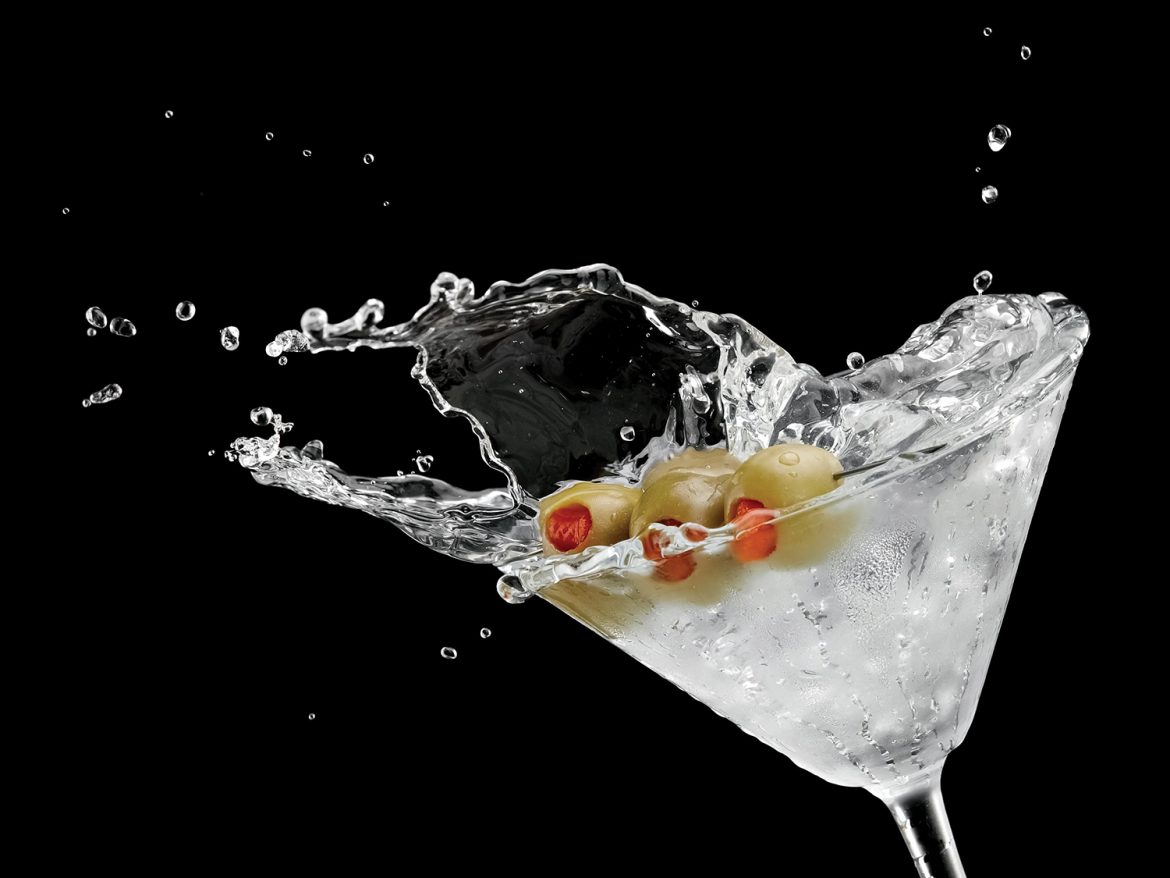The most classic cocktail of all
By Matthew DeBord
HQ 107 | AUTUMN 2019
Classic cocktails have made a massive comeback in recent years, driven by the popularity and influence of TV shows such as Mad Men and enhanced by a new generation of mixologist-bartenders who have become scholars of drink. Most major U.S. cities now have a bar, or bars, that specializes in inventive cocktails.
Of course, there’s nothing wrong with the standbys. In fact, the more expert mixology becomes, the more important it is to have some basics to fall back on, for concocting at home. Enter the Martini, perhaps the most classic cocktail of them all.
I’ve been mixing my own Martinis for decades and have some strong opinions about how it should be done. But that doesn’t mean you have to pay attention to my suggestions. If you like four ounces of cold vodka or gin in a glass with a lemon twist, and you want to call that a Martini, be my guest.
I wouldn’t personally call it a Martini, but then again, some folks would say that my Martini can’t be called one, either. I’ll explain how it’s made, and you can decide for yourself. And then I’ll provide a more classic recipe.
A lot of folks think you need great vodka or gin to make a great Martini, but that isn’t true. It’s fine if you want to devote some Grey Goose to the task. Personally, I think Stolichnaya is fine, and if you prefer gin, my recommendation is Beefeater. I also like Finlandia vodka.
You’ll need both for my Martini, as well as some olives, a lemon, ice, a cocktail shaker and a classic wedge-shaped Martini glass. You’ll also need some dry vermouth; my go-to brand is Noilly Prat.
I use a three-to-one vodka/gin-vermouth ratio, and I measure. First, I fill a cocktail shaker with cubed ice. Then I add two ounces of gin, one ounce of vodka and one ounce of vermouth. I swirl the mixture and allow it to sit for a minute to permit the ice and liquor to combine (the “watering” of the drink is critical, and I like to mix gin and vodka to downplay the floral aspects of the gin).
Your Martini glass should be chilling in the freezer while this is going on. Controversially, I don’t advocate for icebox vodka or gin; the booze should be warmer, so that it can melt the ice a bit. Once the minute or so of “watering” has passed, I shake and shake and shake some more, until the shaker is so cold that it’s actually painful to hold.
Then I let it sit for another minute. While that’s happening, I drop one olive into the glass and run a lemon peel around the rim. Then I strain the drink into the glass, and I make sure there’s a sheen of ice on top. Some people don’t like this, but I think it’s critical that the Martini continue to “water” just a little while you drink it.
Now you can drink. Very slowly, savoring every sip. You can also skip the olive. In fact, at a bar, I usually ask for three olives on the side when I order a Martini.
That’s my Martini. A more old-school example would use three and three-quarters ounces of gin and a bare splash of vermouth, and would stir rather than shake. The hardcore “dry” Martini would entail a mere dash of vermouth.
The all-vodka option is also a choice, but purists would argue that it’s not a Martini. I tend to agree, but I also love a dirty Vodka Martini, omitting the gin and the lemon from my recipe. What one can’t omit is the vermouth, as in my book you’d then be drinking consolidated vodka shots. But to each his own.
The Martini actually goes fairly well with food. Sure, you can use it to wash down cashews, but I’ve always found it to be a fine companion of sliced meats and cheeses, and an ideal mate for a burger.
What about using really cheap booze to make a Martini? It can be done; but because the ingredients are few, harsh vodka or rotgut gin can ruin the texture of the cocktail, which should be very smooth. And as far as the old shaken-versus-stirred debate goes, I think your choice boils down to the vodka-vermouth ratio. For my Martini, I’m trying to vigorously blend the ice and spirits, so I need the shaker. And don’t worry — it doesn’t “bruise” the gin or anything like that.
Finally, how many Martinis is the right number? I think one sometimes isn’t enough, but three is too many. That doesn’t mean two is just right. If you’re drinking a Martini as a proper cocktail, preparing for dinner, then one is all you need. I’m also not big on afternoon Martinis; this is a cocktail to be enjoyed after the sun goes down.
I developed my Martini mix over about 20 years, so feel free to experiment. That’s what makes cocktails fun. They are better living through chemistry! Enjoy.





